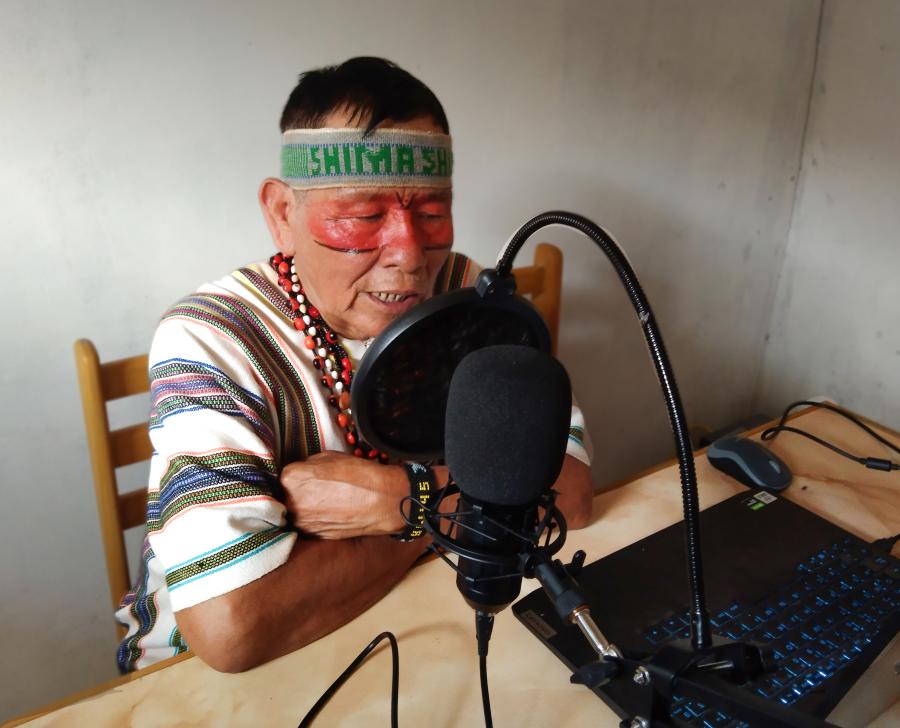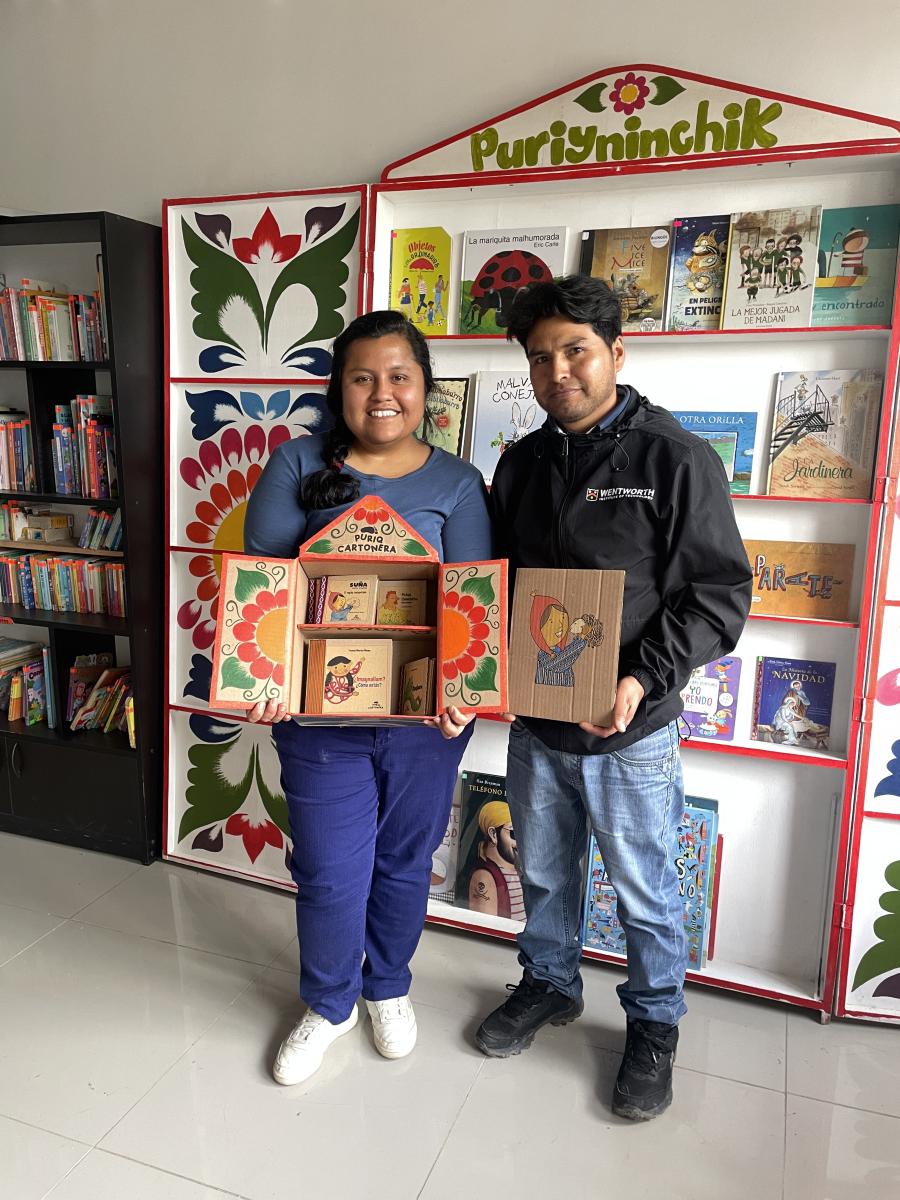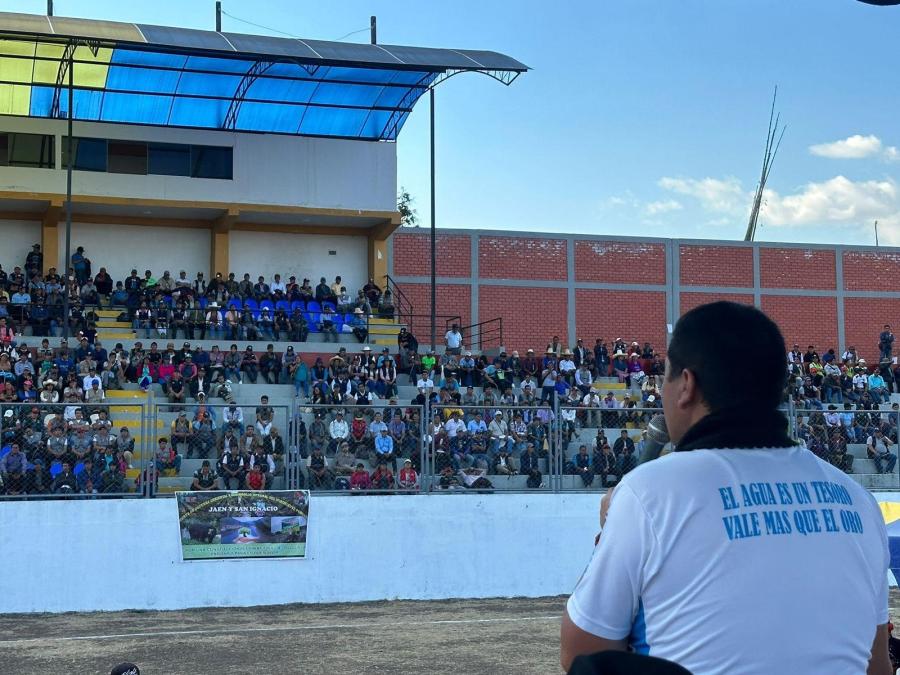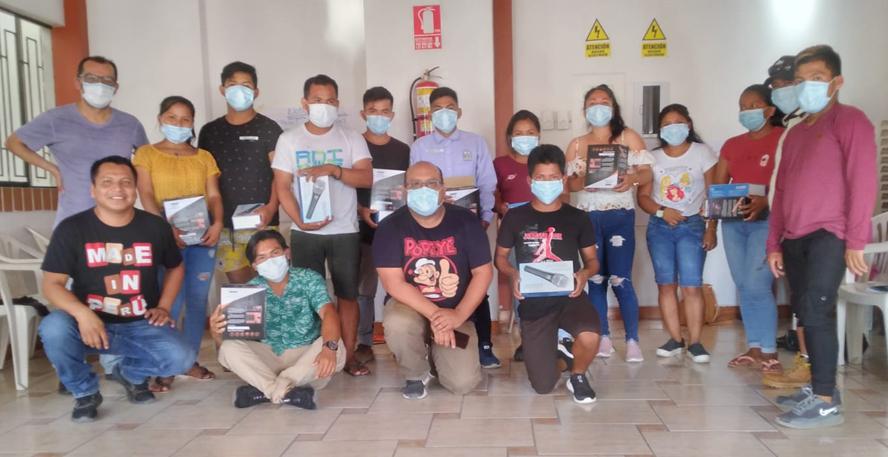
Since mid-2021, the project "Strengthening Radio Communication, Organization, and Struggles of the Kakataibo Peoples," has been implemented by the Native Federation of Kakataibo Communities (FENACOKA) with the participation of youth and women and supported by Cultural Survival's Indigenous Community Media Fund. The initiative has allowed participants to improve their communication and social skills and strengthen their sense of identity while empowering women. This project has so far directly benefited 16 Kakataibo youth and women.
Kakataibo Peoples live along the Aguaytia, San Alejandro, and Sungaroyacu rivers in the departments of Ucayali and Huánuco in central eastern Peru. Indigenous Peoples in this area, initially documented by missionaries between 1727 and 1736, who called them Carapachos, are presumed to be the current Kakataibo. According to information provided by the Ministry of Culture, the population of Kakataibo communities is estimated at 3,715 people. Their language belongs to the Pano linguistic family and they refer to themselves as "uni," which translates as "people."
From the end of the 19th Century until the second decade of the 20th Century, the Kakataibo people were confronted by Peruvian rubber tappers who tried to enslave them to exploit the rubber-rich area. In the mid-20th Century, with the construction of the Lima-Pucallpa highway, many Kakataibos died as a result of newly introduced diseases and labor exploitation. Because of these struggles, the Kakataibo recognize themselves as warrior people. Today, there are eight Kakataibo communities officially recognized by the Peruvian State. Like most of the Indigenous communities of the Peruvian Amazon, they are some of the most impoverished groups in the country. Their situation has been exacerbated by the Covid-19 pandemic and its consequences.
Education, Health, and Environment
The Kakataibo are at a disadvantage even in relation to other Indigenous Peoples. According to data from the 2007 Census of Native Communities of the National Institute of Statistics and Informatics, the Kakataibo have a Spanish illiteracy rate of 16.1%, with illiteracy affecting almost three times as many women compared to men.
The Kakataibo population lacks an intercultural health system, and the postas (free community health centers) and health personnel are insufficient to serve their communities. However, as a result of the pandemic, traditional knowledge and practices have been recovered for the benefit of the health of the communities. The life of the Kakataibo implies a different relationship with nature, made evident by the Covid-19 pandemic; communities have been able to survive the health and economic crisis because the forests and healthy ecosystems, of which they are stewards, have been their main source of food and medicines. The Kakataibo Peoples are further threatened by the occupation of their territories by land traffickers, illegal coca leaf cultivation encouraged by drug trafficking, and illegal logging by settlers recently established in these territories.
In April 2020, Arbildo Meléndez, apu (Indigenous leader) of the Unipacuyacu community, was murdered while fighting for the titling of his community and the defense of his territory against threats from land and drug traffickers and illegal loggers. Tragically, he is not the only leader to suffer this fate. Meléndez’s death caused a fellow villager to lament, “What do we have to do? Are we worth nothing? Are our lives worth nothing? Are Indigenous people worth nothing? In that case, why don't they destroy us? Are we not true Peruvians?” in front of other members of the Unipacuyacu community, as the villager recalled that they, too, have been fighting for almost three decades for the titling of their territory.
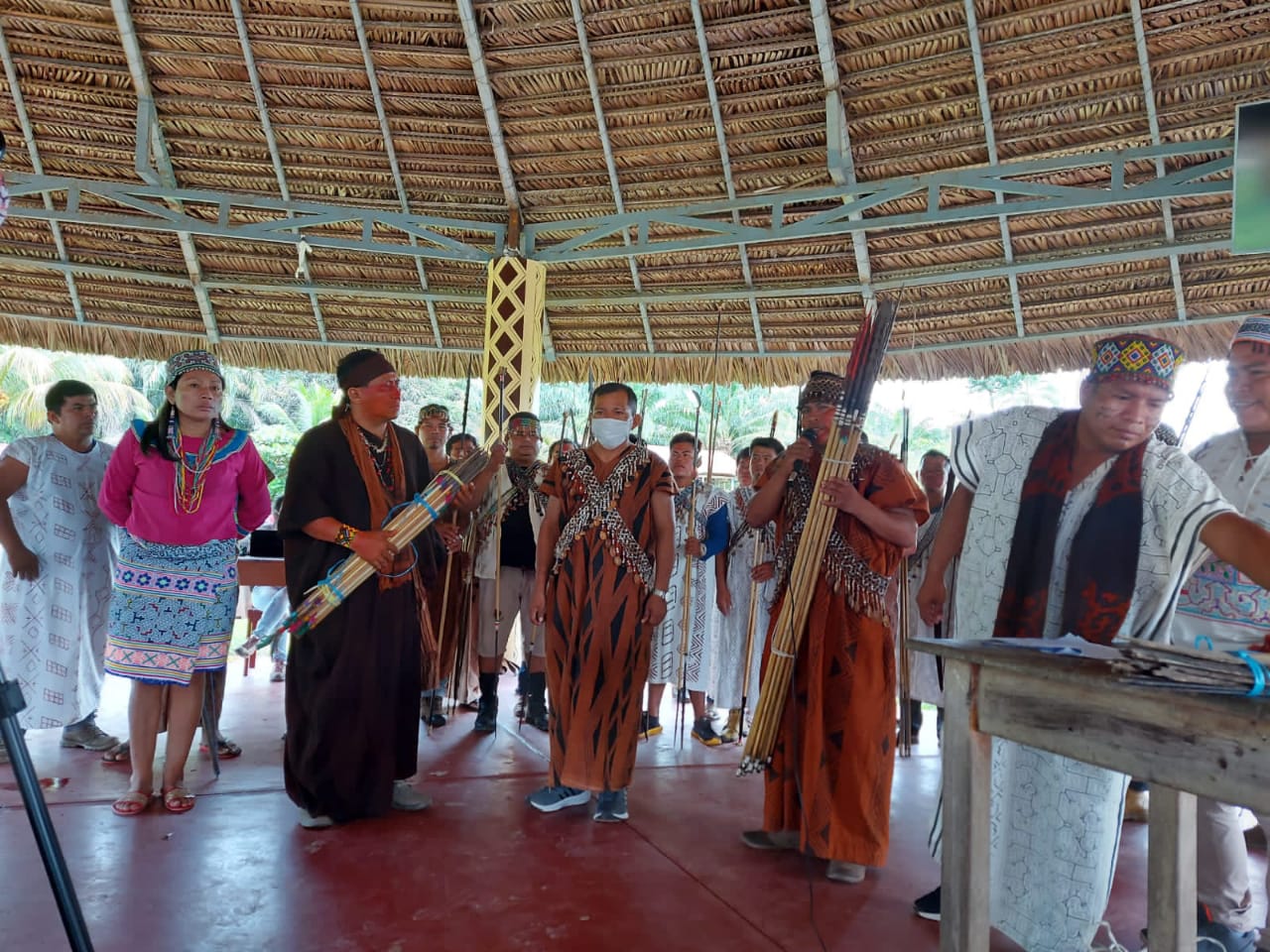
Communication in the Communities
During the course of the project, youth and women expressed the need and importance of communication for their communities in the defense of their territory and local development: “I would like to learn how to speak better, how to express ourselves better...to participate without fear,” said Jhack Maíz, 19, from Sinchi Roca. The main channels of communication in the Kakataibo communities are in person and by phone. As a result of the pandemic, education has been practically frozen at all levels; for the few who are studying, the main tool is WhatsApp.
There is little participation of youth and women in community life and in the federation, whether due to a lack of interest of youth in political and organizational life, or, for women, the lack of opportunities due to machismo and family responsibilities. The community must also contend with the phenomenon of youth migration due to the lack of study and work opportunities, which causes them to move to cities such as Aguaytia, Pucallpa, and Lima, in many cases to work in low-skilled jobs as security guards, cooks, and cleaners.
Most communities have functioning electricity and internet, while some rely on batteries and solar panels. Loudspeakers are used for communication and are usually installed in the communal house, which is the common space where meetings or assemblies are held. Community leaders and youth tend to be the communicators. The loudspeakers are used to transmit the messages of the governing boards and to inform about activities taking place in the community. Transmissions are mainly done in the Kakataibo language and occasionally in Spanish, depending on the amount of mestizo population in each community. FENACOKA has some social networks that allow it to communicate the needs and problems of the organization and to get support from public institutions and private organizations. However, these social networks are maintained irregularly due to the lack of personnel trained in this task.
Gender, Interculturality, and Rights
The project "Strengthening of radio communication, organization, and struggles of the Kakataibo people" trained 16 youth and women from different communities in technological, social, and narrative tools of communication with the goal of improving the organizational and social fabric of the communities. The training had cross-cutting themes of gender, interculturality, and rights to broaden the participants’ exercise of rights and intercultural citizenship. “From the first workshop, I learned the parts of communication, customs, and finding out about [what was happening in] the communities, said Emilio Estrella, 19, from Yamino. “Few women participate in these things; we should see how to make them participate more,” reflected Elsa Westreicher, 24, from Puerto Azul.
Project participants also highlighted the interaction and dialogue that allowed them to share their experiences and strengthen their identity, noting the importance of the participation of women and the territory. “The workshop allowed us [youth] to get to know each other from other communities and reflect on the problems of our communities. These workshops make us more empowered, to avoid discrimination for Indigenous youth in the cities,” said Westreicherl. “In the workshop, we got along, we did interviews. The companionship and the dialogue with young people from other communities helped us. These workshops should allow us to have more confidence in each other,” added Clara Salazar, 19, from Puerto Nuevo.
Communication for Advocacy
The Cultural Survival Indigenous Community Media Fund grant has been an important contribution to FENACOKA and the communities, especially for the youth and women who participated. For them, it offers hope for the empowerment and strengthening of their identity from their participation in community life as future leaders, communicators, teachers, or environmental activists. Today, in a territory that is threatened by land invaders, logging, and drug trafficking, it is vital to support communication processes that strengthen the organization, identity, and sense of belonging, where communication is the link between nature, space, and Indigenous organization and culture.
The Indigenous Community Media Fund provides opportunities for international Indigenous radio stations to strengthen their infrastructure and broadcast systems and creates training opportunities for journalism, broadcasting, audio editing, technical skills, and more for radio journalists from Indigenous communities around the world. In 2022, the Indigenous Community Media Fund supported communities with 23 grants totaling $138,000 to Indigenous community media outlets from 13 countries.
